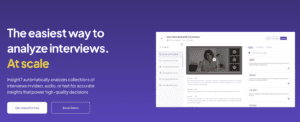Pricing Strategies for PLG (Product-led growth) Startup and Businesses: Complete Guide
-
Bella Williams
- 10 min read

 In the ever-evolving landscape of product-led growth (PLG), crafting effective pricing strategies is not just an art but a science. It’s a crucial factor in attracting users and ensuring sustainable monetization. In this exploration of PLG, we’ll dive deep into innovative pricing models, particularly focusing on freemium and usage-based pricing, and how it can help you set attractive market prices for your products.
In the ever-evolving landscape of product-led growth (PLG), crafting effective pricing strategies is not just an art but a science. It’s a crucial factor in attracting users and ensuring sustainable monetization. In this exploration of PLG, we’ll dive deep into innovative pricing models, particularly focusing on freemium and usage-based pricing, and how it can help you set attractive market prices for your products.
Product- led Growth Definition
In today’s world, where competition is fierce and user loyalty is paramount, PLG has emerged as a strategic cornerstone for companies aiming to simultaneously drive user adoption and revenue growth. Understanding the intricate dance between product-led growth and pricing dynamics is essential for any business striving to thrive in this fiercely competitive environment.
At the heart of product-led growth lies the philosophy of letting the product market itself. This approach places significant emphasis on the inherent value of the product, with a primary focus on enhancing user experience and satisfaction.
Significance of Pricing
While the product’s value is unquestionably pivotal, the way it is priced can make or break its success. Pricing strategies wield immense influence over user acquisition and monetization. Striking the right balance is not just advisable; it’s indispensable for sustained success in the PLG model.
PLG is synonymous with innovation, and this extends to pricing models. Two standout approaches are the freemium model and usage-based pricing, each having its unique advantages and challenges to the table.
Freemium Model of Pricing for PLG businesses
 The freemium model, a marriage of “free” and “premium,” tantalizes users with access to a basic version of the product at no cost, while offering an enticing upgrade path for additional features. This strategy aims to cast a wide net, attracting a large user base with the potential for upselling premium services.
The freemium model, a marriage of “free” and “premium,” tantalizes users with access to a basic version of the product at no cost, while offering an enticing upgrade path for additional features. This strategy aims to cast a wide net, attracting a large user base with the potential for upselling premium services.
The allure of free products is a psychological trigger that the freemium model skillfully exploits. By allowing users to experience the basic version without any upfront cost, it not only reduces the barrier to entry but also creates a strategic avenue for enticing users toward premium features.
Benefits of Freemium as a PLG Pricing Model
- User Acquisition: Freemium models excel in attracting a broad user base. By offering a basic version of the product for free, companies can quickly accumulate a large pool of users.
- Upselling Opportunities:The freemium approach creates a strategic pathway for upselling. Users who experience the value of the basic version are more likely to consider upgrading to premium plans for additional features and functionalities.
- Reduced Barrier to Entry: Offering a free version significantly reduces the initial barrier for users to try out the product. This accessibility encourages more users to explore the product without the commitment of an upfront cost.
- Viral Growth: Freemium models often leverage the power of word-of-mouth and viral growth. Satisfied users of the free version can become advocates, spreading awareness and attracting new users through their recommendations.
Challenges of Freemium as a PLG Pricing Model
- Conversion Challenges: One of the primary challenges of the freemium model is converting free users into paying customers. Convincing users to transition from the free version to a paid plan requires effective communication of the additional value offered.
- Optimal Feature Balance: Striking the right balance between free and premium features is crucial. Offering too much for free can limit revenue potential, while providing too little may discourage users from upgrading. Finding the optimal feature balance is a delicate task.
- Monetization Uncertainty: Relying on a freemium model introduces a level of uncertainty in revenue generation. Companies must carefully assess and strategize to ensure that the conversion rate from free to paid users is sufficient for sustainable monetization.
- Sustainable Value: Ensuring that the free version provides substantial value to users without undermining the attractiveness of premium offerings is a persistent challenge. It requires constant evaluation and adjustment to maintain a delicate equilibrium between free and premium features.
Definition and Application of Usage-Based Pricing for PLG Businesses
 Usage-based pricing is a dynamic approach that aligns charges with the extent of a user’s engagement or consumption of the product. Common in platforms with varying usage patterns, it ensures users pay for the value they derive.
Usage-based pricing is a dynamic approach that aligns charges with the extent of a user’s engagement or consumption of the product. Common in platforms with varying usage patterns, it ensures users pay for the value they derive.
In the context of PLG, usage-based pricing is a strategic tool, ensuring users pay proportionally to the value they extract from the product. This model finds particular effectiveness in products with variable usage patterns.
Benefits of Usage-Based Pricing in PLG
- Granular Pricing Structure: Usage-based pricing allows for a granular approach, where customers pay based on their actual usage or consumption of the product. This precision ensures fairness and transparency in billing.
- Scalability for Users: Users benefit from scalability as they only pay for the resources or features they actively use. This flexibility aligns with the variable needs of different users, promoting a personalized and cost-effective experience.
- Incentive for Efficient Use:This model encourages users to optimize their usage, fostering more efficient and mindful interaction with the product. Users are motivated to use resources judiciously to control costs.
- Predictable Costs for Providers: For PLG providers, usage-based pricing offers predictability. The more users engage with the product, the more revenue is generated. This aligns the provider’s income with the product’s popularity and value.
Challenges of Usage-Based Pricing in PLG
- Complex Communication: Communicating the intricacies of usage-based pricing to customers can be challenging. Ensuring users understand how their usage translates into costs requires clear and transparent communication.
- Setting Accurate Usage Metrics: Determining the appropriate metrics for usage and setting them accurately is crucial. Misjudging metrics can lead to customer confusion and dissatisfaction, impacting the effectiveness of the pricing strategy.
- Potential Customer Resistance: Some customers may resist usage-based pricing, especially if they prefer fixed, predictable costs. Convincing customers of the value and fairness of this model requires effective marketing and education.
- Variable Revenue Streams: While usage-based pricing offers scalability, it also introduces variability in revenue streams. Providers must be prepared for fluctuations in income based on changes in user engagement, requiring robust financial planning.
Can You Combine Freemium and Usage-Based Pricing?
Yes, some PLG trailblazers adopt hybrid pricing models, seamlessly blending elements of freemium and usage-based models. This hybrid approach provides flexibility, catering to a broader audience with diverse preferences.
Hybrid models offer users a taste of a basic free version while providing tiered plans based on usage. This strategic amalgamation maximizes the potential for both user acquisition and revenue generation.
Examples of Successful Hybrid Models:
Trailblazers like Dropbox and Slack have carved their success stories by adeptly implementing hybrid models. They entice users with free plans featuring limited features while offering premium plans with additional benefits.
Factors Influencing Pricing Decisions
Determining the pricing strategy for a product-led growth (PLG) product is akin to navigating a complex landscape. Several factors come into play, each exerting its influence on the ultimate pricing decisions.
- User Value Perception: User value perception is a cornerstone in pricing decisions. Understanding how users perceive the value of the product, what features are most valuable to them, and what price they are willing to pay is crucial. It involves aligning the perceived value of the product with the pricing strategy.
- Market Competition: The competitive landscape is a significant factor. Analyzing what competitors offer, their pricing models, and identifying the unique value proposition of the PLG product in comparison is essential. It ensures the product is positioned competitively while considering market expectations.
- Product Differentiation: Product differentiation plays a pivotal role in determining the pricing strategy. If a PLG product offers unique features, superior performance, or a distinctive user experience, this differentiation can be reflected in the pricing. The perceived added value justifies a potentially higher price point.
Achieving the right balance among these factors is critical to establishing a pricing strategy that not only reflects the product’s value but also remains competitive and appealing to the target market.
PLG Pricing as aStrategy for User Acquisition
In the realm of product-led growth (PLG), pricing serves as more than just a revenue-generating mechanism—it’s a strategic tool for acquiring a robust user base. The focus extends beyond monetary gains to striking a delicate equilibrium between affordability and perceived value.
- Affordability vs. Value: Striking a balance between affordability and perceived value is paramount. Offering pricing plans that cater to different segments of the user base ensures inclusivity and widens the reach of the product.
- Attracting and Retaining Users: Pricing becomes a tool for both attracting and retaining users. Initial affordability attracts new users, while delivering substantial value ensures their retention over time. A positive user experience is crucial for long-term engagement.
- Flexibility in Pricing Plans: Providing a range of pricing plans, each offering a different level of features and benefits, accommodates diverse user needs. This flexibility ensures that users can choose a plan that aligns with their specific requirements and budget constraints.
In essence, the pricing strategy in PLG becomes a dynamic force, not just in revenue generation, but in sculpting a user base that is both expansive and loyal.
Balancing Perplexity and Burstiness in Your Pricing Model
 For PLG pricing, finding equilibrium between perplexity (complexity) and burstiness (variability) is imperative. A pricing strategy should be intricate enough to cater to diverse user needs yet simple enough for users to grasp and engage with easily.
For PLG pricing, finding equilibrium between perplexity (complexity) and burstiness (variability) is imperative. A pricing strategy should be intricate enough to cater to diverse user needs yet simple enough for users to grasp and engage with easily.
Perplexity and Burstiness for Pricing Model
Perplexity, in the context of PLG pricing, is synonymous with the intricate nature of a pricing model. It encompasses the complexity and intricacy of the pricing structure, considering factors such as tiered plans, feature differentials, and the overall architecture of how users are billed.
Think of a pricing model like a carefully crafted artwork, like a tapestry. In this “artwork,” each thread symbolizes a part of the pricing strategy. Perplexity happens when these threads weave together in complicated patterns, forming a detailed system. This system needs to meet the different needs and preferences of users.
A perplexing pricing model, when balanced correctly, provides users with options and flexibility. It allows for differentiation between user segments, offering tailored plans that align with their specific needs without overwhelming them with unnecessary intricacies. Achieving this balance is essential to prevent confusion among users and foster a positive perception of the pricing structure.
Burstiness: Navigating Variability in User Engagement
On the other hand, burstiness is all about navigating the variability in user engagement. In the context of PLG pricing, user engagement can exhibit bursts or spikes—periods of heightened activity or usage followed by lulls or quieter phases.
Consider a software platform that experiences surges in user activity during certain times of the month or year. Burstiness acknowledges and accommodates these fluctuations, ensuring that the pricing model remains flexible enough to adapt to changing user behaviors. It’s about avoiding a rigid structure that may penalize users for occasional bursts in usage.
A bursty pricing strategy anticipates and embraces the ebb and flow of user engagement. This could mean offering scalable pricing plans that adjust based on usage spikes or providing features that accommodate occasional intensive use without disproportionately affecting overall costs. By doing so, the pricing model aligns with the dynamic nature of PLG, allowing for responsiveness to users’ evolving needs.
Balancing Perplexity and Burstiness for PLG Pricing Model
In the intricate dance of PLG pricing, the key lies in striking a delicate balance between perplexity and burstiness. Too much perplexity can lead to user confusion and frustration, while too little can result in a one-size-fits-all approach that fails to address diverse user requirements.
Simultaneously, navigating burstiness requires a pricing model that can flex and adapt to varying levels of user engagement without imposing undue financial burdens during peak usage periods.
The hallmark of an effective PLG pricing strategy is finding the sweet spot—a pricing model that is complex enough to cater to diverse user needs (perplexity) yet flexible enough to accommodate the natural variability in user engagement (burstiness). It’s a delicate equilibrium that, when achieved, enhances user satisfaction, encourages long-term engagement, and ultimately contributes to the success of a product in the PLG ecosystem.
FAQs (Frequently Asked Questions)
What makes PLG different from traditional growth strategies?
Product-led growth focuses on letting the product itself drive user adoption, emphasizing user experience and satisfaction, unlike traditional strategies centered around sales and marketing efforts.
How do companies using the freemium model convert free users into paying customers?
Successful conversion in the freemium model often involves strategically showcasing the value of premium features, enticing users to upgrade for enhanced benefits.
What factors should companies consider when setting usage metrics for usage-based pricing?
Setting usage metrics requires a nuanced approach, considering factors such as the product’s nature, user behavior, and industry standards to ensure fairness and transparency.
Can a company switch from a freemium model to a usage-based model, or vice versa?
Yes, companies can transition between pricing models based on evolving business needs. However, such transitions require careful planning and communication to users.
How do hybrid pricing models benefit both user acquisition and revenue generation?
Hybrid models offer a balance by providing a free version for user acquisition while providing tiered plans based on usage for revenue generation, catering to a diverse audience.








